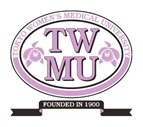Day 3 :
- Track 6: Hospital Pharmacy, Drugs and Regulations
Session Introduction
Valentina Marinkovic
University of Belgrade, Serbia
Title: Comparative analysis of standard ISO 9001:2015 and Good Manufacturing Practice – continues improvement perspective

Biography:
Valentina Marinkovic has completed BSc, MSc, PhD at the Faculty of Pharmacy, University of Belgrade, Serbia. Her professional career built in two directions - academic and work in pharmaceutical industry. She published more than 150 publications in scientific and professional literature. She is Vice – president of the Untied Association for Quality in Serbia. Her current position is Regional Director of Quality for the West Balkans, with multinational company ALVOGEN. She is also Assistant Professor at University of Belgrade, Department of Social Pharmacy and Pharmaceutical Legislation.
Abstract:
The European Medicines Agency (EMA) published a guideline ICHQ10: Pharmaceutical Quality System in January 2011. ICH Q10 guidance provided an example of the pharmaceutical quality system designed to cover the entire product life cycle, to ensure more efficient and effective product realization and to manage the quality risks.The implementation of ICH Q10 has lead to the revision of Chapters1, 2 and 7 of Good Manufacturing Practice (GMP) guidelines. Additionally, pharmaceutical industries were facing the implementation of various standardized management systems by International Standardization Organization (ISO) to achieve the sustainable development dimension. At this moment, the main question that arises is how to integrate these standards. Fortunately, revision of ISO standards is in progress and similar standard elements are recognized. Draft International Standard ISO 9001:2015was issued in May 2014 and Final Draft International Standard (FDIS) is expected to be issued in May 2015. The aim of this paper was to provide a comparative analysis of the final draft of international standard ISO 9001:2015 and current GMP requirements. The above standards have been observed in terms of their similarities and disparities. Based on this analysis and considerations, the comprehensive model of Integrated Management System for pharmaceutical industry has been developed

Biography:
Dr. Tarek Kilani has completed his B.Sc. in Pharmacy, from The Jordan University of Science and Technology in Jordan. A Postgraduate Diploma in Healthcare Management & Leadership & Postgraduate Diploma in Supply Chain & Logistics from Westford School of Management. He is the Pharmacist In-Charge & Hospital Continuing Medical Education Coordinator at Emirates French Hospital Abu Dhabi – United Arab Emirates. He is Member in The International Pharmaceutical Federation (FIP), with a working experience more than 10 years utilizing his Clinical Experience in the Field of Healthcare Administration and Management in the best possible way for achieving the Highest Quality in Health Care System
Abstract:
The business of fake drugs is a lucrative crime that is increasing annually worldwide. It causes therapeutic failure, drug resistance and economic sabotage. Some of the major causes of widespread drug counterfeiting include corruption, inadequate technology for protection of the identity of genuine drugs as well it requires both local and international efforts. This presentation is aimed to provide an overview of the counterfeit medication problem examining the problem of drug counterfeiting Consequences with emphasis on the causes and possible solutions.
Madhu Anand
Dr. B.R. Ambedkar University, India
Title: Environmental exposure to persistent organochlorine pesticides and risk of breast cancer in indian females

Biography:
Madhu Anand is a Toxicologist, who has been a Postdoctoral fellow in the Department of Chemistry at Dr. B R Ambedkar University, Agra since 2011. She obtained her PhD degree from Indian Institute of Toxicology Research, Lucknow, in Life Sciences and worked in the field of environmental pollution and human health for 12 years at the Indian Institute of Toxicology Research, Lucknow and Dr B R Ambedkar University, Agra. Her recent efforts have focused on air pollution and female health. She has published more than 15 papers in reputed journal and serving as a Reviewer.
Abstract:
In India, breast cancer is the most common type of cancer among women, although the incidences are very low i.e., 19 per 100,000 compared to the United States and United Kingdom, where the incidence rates are quite higher i.e., 101 in United States and 87 in the UK. But the death per incidence ratio is highest in India is about 50%, followed by 30% in China and 18% in the United States. The etiology is remains, unknown but environmental, genetic, nutritional and hormonal factors are established as contributory risk factors. The majority of breast cancers have been proposed to be of environmental origin. Among the environmental factors organochlorine pesticide have has been suggested to play a causative role in the etiology of breast cancer. Organochlorine pesticides are widely dispersed and persist in the environment, act as xenoestrogen, get stored in adipose tissues and act as tumor promoter. Keeping all the views in mind, we have planned a multicentric study to evaluate the risk of breast cancer in different regions of India. Knowledge and awareness of breast cancer due to pollution is yet to accomplish desired goals and impact, therefore urgent intervention by the relevant bodies to educate and enlightening of the females is required.
Nadia Raeessi
University of Medical Sciences, Iran
Title: : “Coffee plus Honey†versus “topical steroid†in the treatment of Chemotherapyinduced Oral Mucositis: a randomised controlled trial

Biography:
Neda Raeessi graduated from Tehran University of Medical Sciences about one year ago as a General Practitioner (GP). Now she is working as a Medical Researcher at Atherosclerosis Research Center, Baqiyatallah University of Medical Sciences. Under supervision of the university professors, she published some papers in reputed journals. Since eight years she and a group of scientists are working on the healing effects of honey and coffee on different medical problems and published four articles in this field.
Abstract:
Background: Oral mucositis is one of the common complications of cancer chemotherapy and about 40% of the patients who take chemotherapy protocols, experience this irritating problem. The purpose of this study was to draw comparisons between the therapeutic effects of our treatment modalities (topical steroid, honey, honey plus coffee) in patients suffering from oral mucositis. Methods: This was a double blinded, randomised clinical trial of a total of 75 eligible adult participants, which they randomly fell into three treatment groups. For all the participants a syrup-like solution was prepared. Each 600 grams of the product consisted of “20 eight-mg Betamethasone solution ampoules in the Steroid (S) group, 300 grams of honey plus 20 grams of instant coffein the Honey plus Coffee (HC) group, and 300 grams of honey for the Honey (H) group. The participants were told to sip 10 ml of the prescribed product, and then swallow it every three hours for one week. Severity of lesions was clinically evaluated before the treatment and also one week after the initiation of the intervention. This study adhered to the principles of the Declaration of Helsinki and guidelines of Good Clinical Practice. Results: This study showed that all three treatment regimens reduce the severity of lesions. The best reduction in severity was achieved in HC group. H group and S group took the second and third places. In other words, honey plus coffee regimen was the most effective modality for the treatment of oral mucositis. Conclusion: Oral mucositis can be successfully treated by a combination of honey and coffee as an alternative medicine in a short time. Further investigations are warranted in this field.
Ahmad F K Alzayadi
Curtin University, Australia
Title: The stability of injectable oxytocin with respect to pH

Biography:
Ahmad F K Alzayadi has completed his Bachelor, Master in Clinical Pharmacy at Curtin University. He has almost completed his PhD studies also at Curtin University. He is a registered pharmacist, practising in the north metropolitan area of Western Australia. He is also involved in various community works through the Fadeck Cultural Centre in Western Australia.
Abstract:
Arshad mahmood
University of Innsbruck, Austria
Title: Transport of self-nanoemulsifying drug delivery system (snedds) across mucus and cellular internalization

Biography:
Abstract:
Purpose: The aim of this study was to investigate SNEDDS as a carrier system for targeted delivery of drugs and/or genes to mucosal epithelial cells. Methods: SNEDDS formulation contained 30% (m/m) Cremophor EL, 30% (m/m) Capmul MCM, 30% (m/m) Crodamol and 10% (m/m) propylene glycol. Initially droplet size and surface charge was determined to characterize the SNEDDS formulations. Mucus permeation ability of SNEDDS was investigated by the silicon tube method. Florescent microscopy was performed to establish viability of SNEDDS over Caco-2 cells using concentration gradient (0.1, 0.5 and 1.0 %). Furthermore, the interaction of SNEDDS formulation in terms of level of internalization and pathway was evaluated with Caco-2 cell monolayer (model of intestinal epithelium) cultured in 24-well plates. Results: Droplet size was observed to be 35.50 ± 8.37 nm with zeta potential approaching neutral value (-0.52 mV). Mucus permeability of 1% SNEDDS formulation evaluated with silicon tube filled with mucus demonstrated diffusion of 15.6%, 4.08% and 0.71% of the marker in initial three segments (2 mm each) after 4 h of incubation at 37oC. Cytotoxicity analysis established 0.5% SNEDDS formulation to be feasible for the cellular internalization studies. Confocal microscopy revealed that droplets of the formulation were successfully internalized in the cytoplasm of Caco-2 cells. Moreover, quantitative analysis demonstrated that 1.34% and 1.87% of fluorescein diacetate having been incorporated in SNEDDS as marker was effectively internalized after 2 h and 4 h of incubation, respectively. By using pharmacological inhibitor block method, cell internalization pathways were explored. A substantial decrease of 50.82% occurred in the presence of indomethacin (caveolae mediated pathway inhibitor) and 29.80% in the presence of chlorpromazine (clathrin pathway inhibitor)1. Conclusion: SNEDDS permeating the mucus gel layer and reaching the cytoplasm after being transported by multiple endocytosis pathways appear to be promising carrier system for mucosal epithelial delivery.
Irmak Dik
University of Selcuk, Turkey
Title: Effects of inactive parapoxvirus ovis on cytokine levels in rats

Biography:
Irmak Dik is pursuing her PhD education from Selcuk University and will complete in next year. She works as a Research Assistant in Selcuk University Faculty of Veterinary Medicine. She has published more than 8 papers in reputed journals and has been working on some project.
Abstract:
Inactive parapoxvirusovis (iPPOV) is a commercial product widely used in veterinary medicine as an immune stimulator and/or non-specific paraimmune activator for protection against various infectious diseases. The aim of this study is to determine the effects of iPPOV on pro-inflammatory and anti-inflammatory cytokine levels in rats. A total of 56 rats were used in the present study. iPPOV (1 mL/rat) was administered intra peritoneal route to all rats, except for 7 rats (Control, 0 group). Serum samples were collected from 7 rats at the 1st, 2nd, 4th, 8th, 12th, 16th and 24th hours after treatments. Serum levels of Tumor Necrosis Factor-alpha (TNF-α), Interleukin (IL)-6, IL-12 and IL-10 were determined using commercially available Enzyme Linked Immunosorbent Assay kits. Administration of iPPOV stimulated TNFα (16th and 24th hours) and IL-6 (12th, 16th and 24th hours) synthesis and caused fluctuations in IL-10 and IL-12 concentrations. In conclusion, increased cytokine levels could be attributed to immunomodulatory activity of iPPOV, however, detailed studies are required to fully understand effects of iPPOV on immune system.
Marija Mazor
Orléans University, France
Title: A potential breakthrough in osteoarthritis treatment: Alternative method for cartilage repair by mesenchymal stem cells

Biography:
Mazor M is a double Masters graduate having obtained a degree in Molecular Biology from the Faculty of Science, University of Zagreb, Croatia and in Bio Industrial Technology from the Faculty of Science, University of Orleans, France. She is currently a PhD student at the Centre for Treatment & Prevention of Osteoporosis and Arthritis at Orleans University France. She is also working as a Lecturer in Molecular Biology for the Masters in Muscular Skeletal Pathology at the Faculty of Science, Orleans University France
Abstract:
Osteoarthritis treatments such as mosaicoplasty and autologous chondrocyte implantation are frequently used but remain debatable. Mesenchymal stem cell (MSC) therapy has become the main focus of tissue engineering research to achieve functional replacement of articular cartilage. Results showed that MSC originated from bone marrow, adipose tissue, and synovial produce mostly hypertrophic cells. Purpose: Investigate whether degenerated cartilage holds viable subpopulation of MSC which has the potential to regenerate hyaline cartilage. Methods: Cells were removed and proliferated in cell culture for 3 weeks from 10 osteoarthritic tibial plateaus. The prevalence of chondrocytes, osteocytes, MSC and hypertrophic chondrocytes was studied. Differentiation capacity of cells into chondrocytes, osteocytes and adipocytes was investigated. Formation of each cell line was determined by Masson trichrome staining for bone and cartilage, HES staining and nil red staining for lipids. Tissues were histologically classified to different grades based on Mankin’s scale. Results: Following 3 weeks of cell culture, the average cell proliferation rate was up to 5 fold. Expression of the MSCs marker CD 105 showed a 6 fold increase in grade 3 and 4 compared to grade 1. MSC marker CD 166 showed only a one fold increase between these grades. Hypertrophic cartilage marker (Collagen type I) increased by 32 fold in grade 3 and 4 compared to grade 1. Cells from all grades had the capacity to form cartilage, bone and adipose tissue. Conclusion: Results indicate the presence of viable and proliferative cells with progenitor-like characteristics that may represent novel solutions to articular cartilage repair.
Joana Liberal
University of Coimbra,Portugal
Title: Molecular and Cellular Targets of polyphenols from Fragaria vesca leaf

Biography:
Joana Liberal complete her Master Degree in Molecular and Cell Biology in 2008 at University of Aveiro and is currently finishing her PhD work, in Pharmacognosy and Molecular Biology fields, at Center for Neuroscience and Cell Biology of University of Coimbra. Her research interests are focused in the evaluation of the biological properties of natural products and the underlying molecular mechanisms. She has published 10 papers to date, one provisional patent application and one book chapter.
Abstract:
Natural products have been a fertile source of novel lead molecules for drug discovery, being for long known that many plant-derived compounds have anti-inflammatory, antioxidant and anticancer activities. Fragaria vesca has been used by traditional medicine for the treatment of several diseases. In order to validate and evaluate the mechanisms involved in the activities previously reported, a hydroalcoholic extract from Fragaria vesca leaves was obtained. Using a mouse macrophage cell line we observed that the extract inhibited the production of nitric oxide (NO) triggered by lipopolysaccharide, partially due to a direct scavenging of NO. The extract also affected the cellular proteolytic pathways, through the reduction of proteasome activity and modulation of autophagic machinery, mechanisms that are therapeutic targets in cancer treatment. In order to identify the compounds responsible for these effects, the extract was further fractionated and the different fractions screened in human hepatocellular carcinoma cells (HepG2). The ellagitannin-enriched fraction (EEF) had the lower IC50 for cell viability and was then selected to pursuit the study. EEF induced cell cycle arrest at G2/M checkpoint, decreased cell proliferation and inhibited both autophagy and ubiquitin-proteasome system. Furthermore, to study the cytotoxic mechanism of EEF, an iTRAQ (isobaric tag for relative and absolute quantitation) based proteomics approach was used. Several proteins (914) were identified, among which 133 were significantly modulated, most of them related to metabolic processes. Overall, EEF decreases cell proliferation through different mechanisms involving diverse molecular targets, suggesting that Fragaria vesca could be a source of valuable molecules with anticancer potential.
Cenciarelli Orlando
University of Rome Tor Vergata, Italy
Title: From Ebola virus to Tuberculosis: emerging and re-emerging infectious diseases in the era of fast transports

Biography:
Cenciarelli Orlando is an expert in Biosecurity. He has obtained in 2010 the Master of Science degree cum Laude in Cell and Molecular Biology. In 2011, he achieved the Master of Philosophy in Protection from CBRNe events. In 2014 he complete the PhD program in Industrial Engineering. From 2010, he is employed as Research Fellow at the University of Rome Tor Vergata. From 08/2013 to 11/2014 he was Academic Guest to the ETH, Zurich (Switzerland) at the Department of Health Sciences and Technology. Since 2012, he is Lecturer in Virology (Microbiology and Clinical Microbiology area) at the Department of Biology, University of Rome Tor Vergata (Course of Study in Biotechnology). He is a member of the Directive Board of Master Courses in Protection against CBRNe events since 2013. In 2014, he was lecturer at the NATO School – Oberammergau, Germany, during the NATO Biological Warfare Defence Awareness Course
Abstract:
In the era of fast movements of human populations, mainly by air transportation but also by sea or overland, several emerging and re-emerging diseases have undergone an alarming spread: the literature reports numerous infectious diseases, mainly viral and bacterial, which have followed a rapid and unpredictable travel-associated diffusion, on a very short timescale, during the last decades. Their capability of reaching areas far from the site of the first infections involves not only affected individuals, but also potential vectors or reservoirs of the infection. The Ebola virus (an emerging virus) outbreak, which affected West Africa since the spring of 2014 represents, by size and geographical spread, an unprecedented threat to global health. The current outbreak has reached urban areas, overcoming the self-limitation that kept the spread confined to rural areas during previous outbreaks. However, also many infectious diseases known for a long time have undergone a significant recrudescence in several areas; often this is closely related to the migratory flows and to the movement of human masses, which contributes to the re-emergence of pathogens. The reduction of the impact of such infectious disease over the years might as well have led to limited controls and preventive measures, which might have contributed to their re-emergence. By exploiting some case-studies, we present the emerging and re-emerging infectious diseases analyzed under the light of their potential or effective diffusion thanks to fast transportation; we focus our attention on the strategy of precaution and prevention, also by drawing on international standards.
Ozge Korkmaza
Cumhuriyet University School of Medicine, Turkey
Title: Labetalol, Nebivolol and propranolol relax human radial artery used as coronary bypass graft

Biography:
Ozge Korkmaza is currently working as an Assistant Professor at Cumhuriyet University School of Medicine, Turkey.
Abstract:
Objective: Beta-blockers are a heterogeneous class of agents that are used in the treatment of many cardiovascular diseases, especially hypertension and atherosclerosis, and are commonly prescribed after cardiac surgery. In the present study, the aim is to investigate the vasorelaxant effects of some common beta adrenoseptor blockers on the human radial artery (RA) in vitro, as well as their relaxation mechanisms. Methods: RA rings sourced from human patients were mounted in an organ bath and tested for changes in isometric tension in relaxation response to labetalol, nebivolol and propranolol in the presence and absence of NG-nitro-L-arginine methyl ester (L-NAME, 3 x 10-5 mol/L) and tetraethyl ammonium (TEA, 3 x 10-4 mol/L). Results: The labetalol (10-8 to 10-4 mol/L), nebivolol (10-8 to 10-4 mol/L) and propranolol (10- 8 to 10-4 mol/L) induced concentration-dependent relaxations on the RA rings, which had been precontracted with phenylephrine (10-6 mol/L). The relaxation response induced by labetalol in the isolated RA rings was significantly higher when compared to the nebivolol and propranolol samples (p< 0.05). L-NAME significantly reduced the relaxation of nebivolol (p< 0.05) and TEA significantly reduced the relaxation of labetalol, nebivolol and propranolol (p < 0.05). Conclusion: We speculated that the relaxant effect of labetalol, nebivolol and propranolol was due partly to the Ca2+ -activated K+ channels. In addition, the relaxation induced by the nebivolol was largely related with nitric oxide release. Nebivolol, and partly propranolol, may provide significant therapeutic benefit, but Labetalol can be a good alternative for CABG with RA usage.
Ashraf El Metwally
King Saud bin Abdulaziz University for Health Sciences, Saudi Arabia
Title: Perception and attitude of physicians toward local generic medicines in Saudi Arabia: A questionnaire-based study

Biography:
Ashraf El Metwally is a medical doctor with a PhD in Epidemiology and Biostatistics (University of Tampere, Finland). He joined the College of Public health and Health Informatics in August 2001, while holding an honorary lecturer position at the department of Public Health- University of Aberdeen in the UK. His research interests are in the epidemiology of pain, musculoskeletal disorders and rheumatic diseases, with 15 published research papers and reports in international peer-reviewed journals. His international awards include the Young Investigator Award from the British Society of Rheumatology (2006), First Prize for The Best Submitted Paper and Presentation from the British Pain Society (2007).
Abstract:
The local market of generic medicine share in Saudi Arabia is low compared to global and regional statistics. The reason for this low market share and the role of physicians has not previously been investigated. The aim of this study was to assess health practitioners’ level of perceived knowledge and attitudes about local generic medication and identify factors that influence infrequency of generic prescriptions. A random sample of 231 physicians was recruited from two hospitals in Riyadh; the response rate was 77%. Among the 178 physicians, 76% and 47% reported that they are knowledgeable about the terms “generic” and “bioequivalence” respectively, while 44% reported that they are able to explain bioequivalence to their patients. Around 52% of physicians reported that local generics should be substituted for brands if suitable for the case, and 21.9% reported that they believe SFDA approved local generics are therapeutically equivalent to their brands. Clinical effectiveness was reported by 71.9% of physicians as the most influential factor effecting prescription of brand over local generic medication. The 3 independent significant predictors for infrequent prescription of local generics were: government sector employment OR: 3.74 [95%CI 1.50–9.43], consultant level OR: 3.94 [95%CI 1.50–10.31] and low level of knowledge about local generics OR: 4.11[95%CI 1.56–10.84]. The low market share of local generics medicines attributed to low prescription rates is significantly more among senior-level physicians working in governmental hospitals. Low level of knowledge about generic drugs among physicians was the strongest predictive factor for low prescription. Future studies are needed to confirm these results.
Sherif Salah
Cairo University, Egypt
Title: A novel approach to inhibit hiv-1 infection by actively neutralizing the antibodies of reverse transcriptase system

Biography:
Sherif Salah is awarded PhD from El-Azhar University, Cairo, Egypt in the year 2004. He holds a Master Degree from Helwan University Cairo, Egypt in the year 1998 followed by a Bachelor’s Degree from Helwan University, Cairo, Egypt in year 1991. He has extended his valuable service as an Lecturer at National Center for Radiation Research and Technology.
Abstract:
This study introduces a new approach for HIV eradication based on a new enzyme combination (reverse transcriptase and DNA polymerase) formula for inhibiting and/or preventing this disease. The pilot study was done on ten patients who were all positive for HIV antibodies, and were never treated with antiretroviral medications. Those patients were registered under surveillance by HIV/AIDS Control Department at the Egyptian Ministry of Health (MOH). All of these patients have the same clinical symptoms of HIV/AIDS and consented to take this combination therapy in the form of subcutaneous injection of 0.1 cc twice daily for 24 weeks. At the end of therapeutic protocol, all of the patients' viral loads were undetectable (less than 16 copies/ml); also there was a significant increase in their CD4 cells counts to over 500 cells/μL. According to these findings, this treatment protocol may be promising therapeutic modality for treating HIV-1 infection causing Acquired Immunodeficiency Syndrome (AIDS).

Biography:
Sílvia Storpirtis has completed PhD in Biopharmacy in 1992. She has published more than 90 scientific papers. She is a Consultant of the Brazilian Health Surveillance Agency (ANVISA) for elaboration of technical regulations for generic and similar drugs (1999-2006). She is the Member of the Bioequivalence Working Group of the Pan American Network for Drug Regulatory Harmonization (PANDRH-PAHO-WHO) between 2000 and 2006, and the Coordinator of the Pharmaceutical Equivalence and Bioequivalence Committee of the Brazilian Pharmacopoeia. She is the Member of the USP Brazil Advisory Group of the United States Pharmacopoeia and the Consultant of regulatory agencies in Peru and Colombia for supporting the implementation of BA/BE regulations
Abstract:
In Latin America, the implementation of bioequivalence (BE) studies is still unequal. There are remarkable advances, as well as there are some countries without regulations in this field. Despite of this heterogeneity it is possible to recognize efforts from the National Regulatory Agencies (NRA) in discussing bioequivalence criteria, biowaivers based on the concept of the Biopharmaceutical Classification System (BCS), therapeutical equivalence, and interchangeability issues. With this background, regulations have emerged based on in vitro and in vivo assays, but there are differences in terms of the assessment criteria and time elapsed from the application to final approval. However, since the emergence of the BCS there has been an interesting discussion regarding the possibility of including biowaivers in some cases. There is a consensus to apply a biowaiver study for solid oral dosage forms containing an active principle ingredient belonging to Class 1 of BCS (high solubility and high permeability), excluding drugs with narrow therapeutic index, but the interpretation of how to apply biowaivers based on other BCS classes differs between regulatory authorities. Considering that, the pharmaceutical market can reach USD 1,200 billion by 2016; it seems that is necessary to conciliate innovation and implementation of generic drugs. Furthermore, this implementation should be based on the best BE and biowaiver practices and criteria to improve access to safe and effective medicines at reasonable costs
Jindrich Srba
Charles University in Prague, Czech Republic
Title: Position and processing of adverse drug reactions directly submitted by patients to national regulatory authorities in European countries

Biography:
Jindrich Srba has completed his RNDr. at the age of 26 years from Charles University in Prague, Faculty of Pharmacy, Czech Republic. He performs doctoral study at Department of Social Pharmacy, Faculty of Pharmacy in Hradec Králové, Charles University in Prague, Czech Republic. He is also Drug Safety Specialist in a pharmaceutical company, where he is responsible for pharmacovigilance activities and medical issues. He has published 5 papers to date and serves as opponent to various projects applying for a grant.
Abstract:
Pharmacovigilance system is consisted of several approaches used for drug safety surveillance. Spontaneous reporting systems in European countries have been established in the second half of the 20th century. Originally, spontaneous collection of adverse drug reactions was designed for healthcare professionals and marketing authorization holders. Under-reporting is in general considered as the main weakness of spontaneous reporting system, however increase in reporting activity at national and international level throughout the years was detected. Many factors may influence spontaneous reporting activity, nevertheless legal obligation of healthcare professionals to report any ADR did not correlate with the increase of reporting activity across the European countries. In this context, direct patient reporting has been included in spontaneous reporting system at national competent authorities. The position of patient-reported outcomes of adverse events (PRO-AE) is being established in pharmacovigilance systems of the European countries. In particular, characterization of reporting activity within European countries, evaluation the positions of adverse drug reaction reports directly submitted by patients to national competent authorities, and processing of PRO-AEs itself is becoming of high importance after the legislation changes in pharmacovigilance established by European Medicine Agency in 2012. PRO-AEs are of high importance in the framework of spontaneous reporting system. Various attitudes to direct patient reporting were detected among respective national competent authorities. New issues, like medical and reporter validation, should be solved. Establishment PRO-AEs in the current spontaneous reporting systems brings both opportunities and potential complications due to specifics of patients as reporters.
Ozgen Ozer
Ege University, Turkey
Title: RSV loaded hyaluronic acid–dppc microparticles as a wound healing system

Biography:
Özgen Özer has completed her PhD and Postdoctoral studies in Faculty of Pharmacy, Ege University. She’s the head of Department of Pharmaceutical Technology and Cosmetology. She has published more than 60 papers and her research areas are mainly design and characterization of Dermal/Transdermal formulations and cosmetics (emulsion, gel, liposome, nanoparticles, vs.), stability tests, the procedures and regulations for commercialization.
Abstract:
Chronic wounds like diabetic lesions and acute injuries like burns, causing large tissue losses, are frequent and researchers try to develop novel strategies to favor wound healing. Conventional ‘topical’ approaches in dermal tissue repair are being insufficient on the problems encountered during the treatment. Resveratrol (RSV) is a powerful antioxidant that stimulates cell proliferation in the dermis by protecting from protease enzymes, by increasing the functions of fibroblasts and by increasing the synthesis of collagen. RSV was incorporated into microparticles by spray drying to treat chronic wounds such as diabetic ulcers. RSV was loaded into microparticles consisting of dipalmitoylphosphatidylcholine (DPPC) and hyaluronic acid (HA), a polysaccharide naturally present within the skin, known to contribute to the healing process. Microparticles were evaluated in terms of production yield, size distribution, encapsulation efficiency, morphology, specific surface area, thermal properties and water content. Spherical and homogenous microparticles (span≤2) in a size range between 20-30 µm were obtained with high encapsulation efficiency (≥97%). The effect of enzymes (hyaluronidase, phospholipase and lipase) on RSV release showed a dose-dependent pattern followed by a slow release stage. Cytotoxicity/proliferation and oxidative stress parameters (glutathione, oxidized glutathione, glutathione peroxidase, malondialdehyde, superoxide dismutase) obtained from human dermal fibroblast cell cultures revealed that formulations increased cell proliferation and the presence of RSV decreased oxidation in cells. RSV-loaded HA-DPPC microparticles appear as a promising formulation for wound healing due to synergistic effect of the ingredients.
Kazuo Yano
Tokyo Women’s Medical University, Japan
Title: Regulatory approval for autologous human cells and tissue products in the United States, the European Union, and Japan

Biography:
Kazuo Yano received his PhD from Cooperative Graduate School of Tokyo Women's Medical University and Waseda University. He is a Part Time Assistant Professors at both Universities. He has published 14 papers in journal and has been an international member of ISO 14155 (Global GCP Standard of Medical Device). Masayuki Yamato received his PhD from Graduate School of Arts and Sciences, University of Tokyo. He is the Director of Institute of Advanced Biomedical Engineering and Science, Tokyo Women’s Medical University. He has published more than 500 papers in journal and has been servicing as an associate editor of Regenerative Therapy.
Abstract:
Since human cells and tissue products belong to a relatively new class of medical products, limited information is available on the classification and premarket evaluation of human cells and tissue products in the United States (US), the European Union (EU), and Japan. We surveyed the definition, legislation, and approval system of a total of nine autologous human cells and tissue products in October 2013. The definition of human cells and tissue products were compatible among the US, the EU, and Japan. The products were categorized as human cells, tissue, and cellular and tissue-based products (HCT/Ps) in the US, advanced therapy medicinal products (ATMPs) in the EU, and cell/tissue-engineered products (currently regenerative therapy products) in Japan. Autologous human cells and tissue products were handled administratively as “accelerated approval of biological product”, “humanitarian device exemption (HDE) approval”, “premarket application (PMA) approval”, “biologics license application (BLA) approval”, and “new drug application approval with specific targeting of post-approval registry or surveillance”. Of nine autologous human cells and tissue products, four products had been evaluated using clinical experiences or open clinical trials with a small number of subjects, although the other products had been evaluated using comparative clinical trials with control treatment. The clinical evaluation of autologous human cells and tissue products would focus on postmarket-oriented evaluation rather than premarket-oriented evaluation. We should consider that the premarket clinical evaluations of these products need to use not only clinical experience but also historical control data, and to use adaptive licensing for approval system
Hechmi Toumi
CHR Hospital Porte Madeleine Orleans, France
Title: Hypouricemic activities of C. flammula leaf extracts in an animal model

Biography:
Hechmi Toumi graduated from the Blaise Pascal University of Clermont-Ferrand, recognized as Research Assistant at the University of Wisconsin Professor and promoted by the University of Wales (UK) and the CNU (France). He is currently Professor of Pathology of Muscular Skeleton, Director of Collegium Science and Technology at the University of Orleans, Deputy Director of the Laboratory EA4708 I3MTO and Vice President of Prevention and Research Institute of Osteoporosis.
Abstract:
The enthesis (plural: entheses) is the connective tissue between tendon or ligament and bone. There are two types of enthesis: Fibrous and fibrocartilaginous. At the former the fibrous tissue of the tendon or ligament extends all the way up to the bone, but at the latter there is a small plug of fibrocartilage at the attachment site itself. Entheses are sites of high mechanical stressing and with age normal entheses are subject to wear and tear; thus degenerative changes occur at their fibrocartilages that are similar to those seen in osteoarthritic articular cartilage. Enthesitis’ is the term used to describe inflammation at tendon, ligament or joint capsule insertions. It manifesting as pain, protracted stiffness and prominent swelling of large insertions, including those of the Achilles and patellar tendons, is characteristically seen in ankylosing spondylitis, psoriatic arthritis and reactive arthritis. Enthesitis appears generally to respond well to the anti-TNF therapies, but it is contentious as to whether or not the improvement in symptoms and signs are accompanied by a retardation of new bone formation. The term ‘enthesopathy’, however, has a wider meaning and designates all pathological abnormalities of insertions including inflammatory changes and degenerative problems. This talk covers recent clinically relevant observations in relationship to the enthesis and observations for imaging and therapy that are relevant to diagnosing and treating enthesitis.

Biography:
Rupal Patel Mansukhani earned her pharmacy degree at the Philadelphia College of Pharmacy. She completed a community practice residency at the University of Illinois in Chicago and Dominick's Pharmacy. She is a Clinical Assistant Professor at Ernest Mario School of Pharmacy/Rutgers University. Her clinical practice site is at the Morristown Medical Center. She currently works with patients prior to discharge to help with medication therapy management and the ease of transitions of care. Currently her focus is in the areas of hypertension, heart failure, anticoagulation, COPD, and Medication Therapy Management (MTM). She has multiple publications and is dedicated to advancing the practice of pharmacy.
Abstract:
With the implementation of the Affordable Care Act (ACA), more focus has been placed on coordination of care and reducing unnecessary medical costs. As a result, the Centers for Medicare and Medicaid Services (CMS) will not fully reimburse for a related diagnosis, such as myocardial infarction, chronic heart failure, or pneumonia, if readmission occurs within a 30-day period. In October 2014, Chronic Obstructive Pulmonary Disease (COPD) will be added to this list. Healthcare organizations will need to focus on improving patient outcomes and minimizing excessive health care costs. Medications are considered first line management for interventions related to COPD. Appropriate medication adherence is necessary to prevent readmissions. The existing literature has demonstrated in patients currently have problems adhering to their medication regimens. Approximately one-half of patients in the United States do not take their medications as prescribed (Sabate 2003). Pharmacists are in a unique position to help overcome many of these challenges. The effect of clinical pharmacy services on readmission rates, length of stay, and financial implications will be evaluated in patients with chronic obstructive pulmonary disease. The research project focuses on the effect of pharmacist’s interventions and the correlation of 30-day readmissions of patients with a primary or secondary diagnosis of COPD. Pharmacists and pharmacy students will provide patients with disease, drug and device education, as well as ensure drug and device access upon patient discharge. Outcomes that will be evaluated include readmission rate, length of stay, financial implications, and patient satisfaction.

